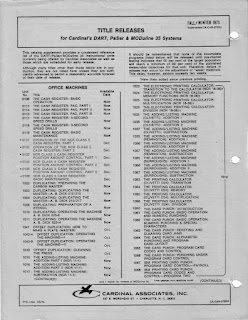
After Wimpy flew the
Armed Robbery on
I’m not a criminal but I played one in a DART program.
Big Daddy had squeezed yet another contract out of Exxon. Our mission was to train gas station attendants in safety practices and, more importantly, how to sell tires and oil to unsuspecting customers.
We couldn’t find a station that would allow us on site during business hours so we rigged up some empty Exxon pumps on wheeled platforms and rolled them onto empty parking lots. There was a lot of sky in those shots.
For one special sequence, The Hold-up, we needed a real station. Big Daddy landed the perfect location, a seedy Gulf station on
On the night in question, as I stood at the cash register brandishing my revolver, a woman walked in and screamed. I turned around and saw another customer ducking behind the Coke machine. I looked around for my people and realized I was on my own. I feared that the real cops would show up any second and take me down. A few minutes later, the rental cop emerged from the bathroom, zipping up his pants. Big Daddy had also stepped away--into the 7/11 next door for a six pack of beer.
Men of Steel, Revisited
Continuing our exploits in the steel industry, well-documented elsewhere by Wimpy, Big Daddy and I traveled to Georgetown, South Carolina to scope out the local steel mill. We took Big Daddy’s Winnebago and camped in
Fear and Loathing at Redstone Arsenal
With his usual brio, Big Daddy snagged a Federal contract to develop a series of video training films at Redstone Arsenal in
We fired up the Big Daddy’s Winnebago, our latter-day mode of travel, and headed south, Schlitz cans jingling along the way. We found a suitably cheesy motel, where Big Daddy bribed the desk manager and his girl friend to serve as his personal attendants during our two-week stay.
Our subject matter experts, three retired Army Corps of Engineers, met us at the motel to brief us on the project. The videos we were to produce would demonstrate how to prepare the foundation for and then rapidly assemble large prefab metal buildings, for the purpose of housing military personnel or displaced citizens in the event of a nuclear attack. Big Daddy called the front desk for another bottle of Old Crow.
Each morning, as we passed through the front gate of the military reservation, Big Daddy would give the soldiers a lazy salute. In the lavishly equipped video studio, we pretended to know what we were doing but accomplished little. During breaks, we would retire to the RV for a drink.
Before long, the project got hung up on some distant bureaucratic reef. Big Daddy was getting pissed. In the end, we dumped the contract and drove home. It turned out to be Big Daddy’s last hurrah.
Coda
After Big Daddy's death, I ran
Background note:
Cardinal was my first white-collar job after college. I started in the Validation Department, where my role was to round up groups of volunteers and subject them to hands-on, audio-visual, vocational training and then to administer a post test, thereby “validating” the effectiveness of the programs. To that end, I worked with drug addicts in rehab, high school dropouts, boy scouts, and other hard-up or marginal members of the community willing to donate their time. Among other activities, I had them tuning up cars, laying courses of brick, making cuff links on a miniature metal lathe, and building foot stools with power saws. By some miracle, no one was ever injured during these adventures. Later on, I graduated to “writer/producer” and continued in the capacity through the Cardinal and

















































